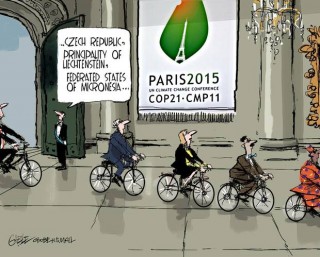This article examines the seriousness of the global issue of rampant wildfires and calls for action to address it.
Appropriate Subject Area(s):
Environmental studies, world issues, politics,
Key Questions to Explore:
- What is causing the exceptional numbers and severity of wildfires worldwide?
- What actions are being taken to address this issue?
- Why are we not getting more leadership and action from our elected officials?
- What should we be doing to get action on this issue?
New Terminology:
GHG emissions
Materials Needed:
Copies of the article for the students
Introduction to lesson and task:
Forest fires are not a new phenomenon. But the widespread occurrence of these fires is exceptional. We have been continually deluged with stories of fires burning out of control and destroying vast tracts of land and personal property. These reports are not limited to Canada; the United States and Europe are among other victims of these events and experts state that this is not an aberration, but rather the new norm which has not yet plateaued. Overwhelming evidence ties these events to man-made climate change and yet we get little leadership on a serious issue which threatens us all. This lesson will have the students examine the issue and suggest steps that should be taken to demand effective action to address it.
Action (lesson plan and task):
- Begin the lesson by asking the students if they are aware of the forest fire issue that has been plaguing Canada all summer.
- Ask them to identify areas of the country where forest fires have been occurring and the extent of the problem in that area.
- Ask them now to identify other countries where similar events are occurring.
- Divide the class into groups of five or six students and ask them to discuss whether they believe that this is a growing problem and what they think its source could be.
- Allow them a few minutes to discuss the questions and then get responses from each of the groups.
- Provide the students with copies of the article and allow them time to read it and discuss their reactions to it.
- Once this has been done, ask the groups to indicate if they would change their previous response given what they have just read.
- Assign the groups the task of discussing what they know about efforts of our governments, both provincial and federal, to address this issue and to outline why they think there has not been more concerted action by them.
Consolidation of Learning:
- Allow the groups time to discuss and formulate their response and then have each of them report back to the class and answer any questions or responses that may come from their report.
Success Criteria:
The students will be able to:
- Explain how the problem of forest fires is growing;
- Identify the source of the problem;
- Explain what is being done to address the issue;
- Outline why they think there has not been more done to address climate change;
- Offer ideas as to what they can do to encourage a more dedicated effort by our governments to address climate change.
Confirming Activity:
- Have the groups discuss what they believe they should do to get our governments acting on this issue and report their ideas to the class. Hold a summary plenary session to see if there is a consensus about what they can do and then discuss with them any possible action they, as a class, could take.

